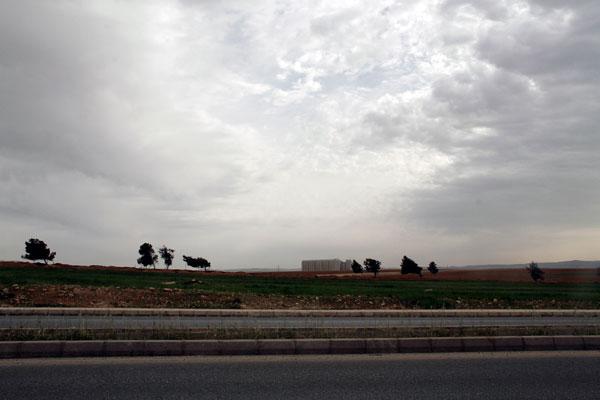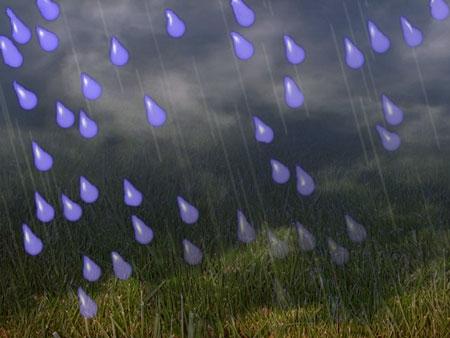You are here
Rainmaking attempt slated for Sunday
By Hana Namrouqa - Mar 26,2016 - Last updated at Mar 26,2016

Ninety per cent of Jordan’s areas receive an average of 20-200 millimetres of rain per year, according to the Jordan Meteorological Department (Photo by Osama Aqarbeh)
AMMAN — An airplane of the Royal Jordanian Air Force will disperse on Sunday cloud seeding agents over the King Talal Dam's catchment area as part of the Kingdom's first experiment in artificial rainmaking, a government official said Saturday.
A test for the experiment was conducted on Saturday, according to Jordan Meteorological Department (JMD) Director Mohammad Samawi, who noted that certain weather conditions are sought after when carrying out artificial rain experiments.
"… Such weather conditions include certain levels of humidity and water vapour, among other factors. After analysing weather charts, we decided to carry out the experiment in this period, during which there will be clouds that are not likely to produce rain," Samawi told The Jordan Times.
Artificial rainfall entails attempting to induce or increase precipitation.
According to the clouds' different physical properties, this can be done using airplanes or rockets to sow the clouds with catalysts such as dry ice, silver iodide and salt powder to increase precipitation, according to web sources.
In Jordan, the JMD is planning to use two groups of seeding agents depending on whether a cloud is cold or warm, including calcium chloride and compressed carbon dioxide as freezing agents, and a compound of urea and ammonium nitrate for the absorption of moisture.
The experiment will be conducted after Jordan and Thailand signed a memorandum of understanding on March 23 to benefit from the East Asian country's experience in rainmaking technology.
"The amount of rain produced from artificial rainmaking cannot be determined immediately. It takes over a year and comparing data from previous wet seasons; however, artificial rainmaking can increase precipitation by 10-20 per cent," Samawi said.
He highlighted that using artificial rainmaking techniques seeks to raise the amount of precipitation in Jordan, 90 per cent of which receives an average of 20-200 millimetres of rain per year, adding that increasing precipitation will raise dam storage, expand the country's green cover and boost natural pastures.
Jordan tried making artificial rain on its own between 1989 and 1995, but the experiment failed as the airplane and equipment used for this purpose stopped functioning, and the project faced several challenges.
The Thai technology was developed in 1969 by King Bhumibol Adulyadej of Thailand who holds an international patent on the rainmaking method, which involves introducing certain chemicals in cloudy areas to “seed” the clouds with increased moisture that would eventually result in precipitation.
In 2009, Jordan received permission from Thailand to use the technique.
Already a victim to climate change, Jordan will witness a 15-60 per cent decrease in precipitation and a 1-4°C increase in temperatures, which will in turn have serious potential impacts on its natural ecosystems, river basins, watersheds and biodiversity, as the 2013-2020 Jordan Climate Change Policy has suggested.
Climate change over the past two decades has also caused a drastic drop in rainfall and prolonged dry spells in the Kingdom, according to a recent study issued by the Water Ministry.
Related Articles
AMMAN — Jordan will resume during this month its artificial rainmaking attempts to increase precipitation for the 2016-2017 wet season, a go
AMMAN — The Jordan Meteorological Department (JMD) is preparing to deploy Thai technology to make artificial rain, JMD Director Mohammad Sam
AMMAN — Jordan's first experiment in artificial rainmaking is scheduled to take place during spring in the Jordan Valley over the catchment
















